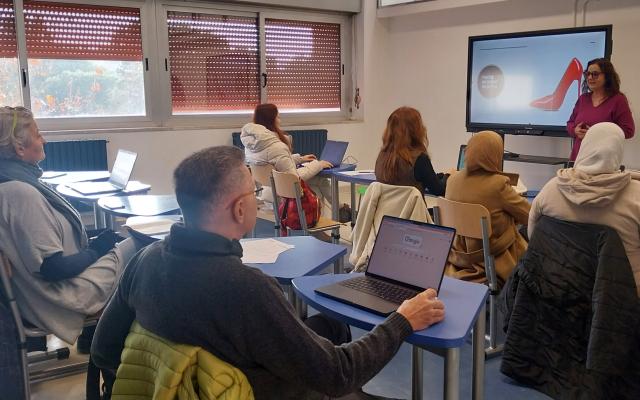3 min.
More than 200 different ethnic groups coexist in the Democratic Republic of Congo, one of the most dramatic epicenters of the many forgotten wars. What drives young people in Congo to partner with their Czech counterparts? Meanwhile, in Vicenza (Italy), a distance-training programme has been developed to introduce prevention and safety measures into Burundi, an African country with a surface 10 times greater than the province of Vicenza and with a average population age of 17.
A school in Pulsano, a municipality with just ten thousand residents in the Province of Taranto in Puglia, is coordinating a school social network with 33 schools from the United States, Ghana, Uganda, Hungary, England, Greece, Sweden, Slovenia, Poland, Portugal, Ukraine, Lithuania and Ireland.
In the middle of the Friuli dolomites, Piancavallo hosts a school in a hospital that allows hospitalized students to develop a radio programme on the mountains. An open source software programme allows 100 “Young Mapper Teams”, immigrant and native youth resident in seven large cities - from Ankara to Berlin – to “reconstruct” the urban space of their cities on www.youmap.eu.
An African fable on the holy tree, Arbre Sacre, inspires a project that connects a Tuscan school in Livorno (Italy) with students in Burkina Faso. What are these African children – whose life expectancy is no more than 50 years - planning for the future?
The strength of the Global Junior Challenge resides in these contrasts. It’s the strength of youth, educators and trainers who, together, create alliances to overcome vast distances. The “geography” of the Global Junior Challenge helps us to reflect and interpret the projects in the competition, to understand the hard daily work to resolve contrasts, solve problems and find new solutions. The GJC is not just a gallery of ideas, it represents a panorama of “living” projects that may breakdown, but are always fixed in order to contribute as fully as possible to the Millennium Objectives. The youth of the world is in the frontline of this battle.
The “geography” of the Global Junior Challenge includes amongst the finalists:
- Mexico – the largest country
- Pakistan and Bangladesh – the greatest number of citizens
- Congo – the highest birth rate
- Italy – highest average age (42)
- Uganda – lowest average age (15)
- Iceland and Spain – the greatest life expectancy
- Zambia – the lowest life expectancy
- Italia, Bulgaria and Greece – the countries with the largest elderly population
- Uganda, Burkina Faso and Burundi – the countries with the smallest elderly population
- Belgium – the highest urban population at 97,3%
- Uganda and Burundi – the lowest urban population (respectively12,4% and 10,6%)
- Ireland – the highest living standard (GDP pro capita) at US$ 52,410
- Burundi – the lowest GDP pro capita at 120 dollars
- France – the highest cost of life
- Pakistan – the lowest cost of life
Source: Il mondo in cifre 2009, Fusi Orari, Roma 20


